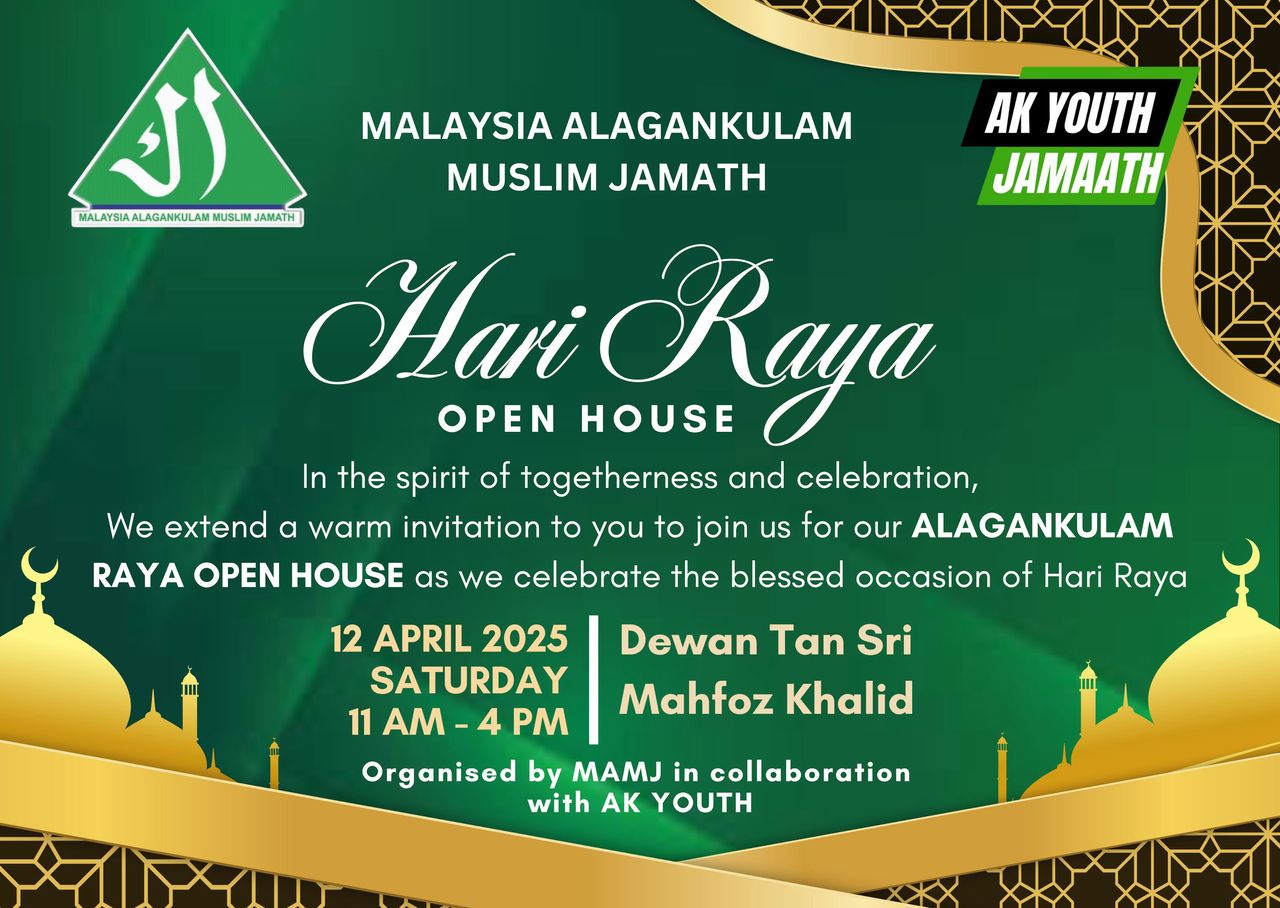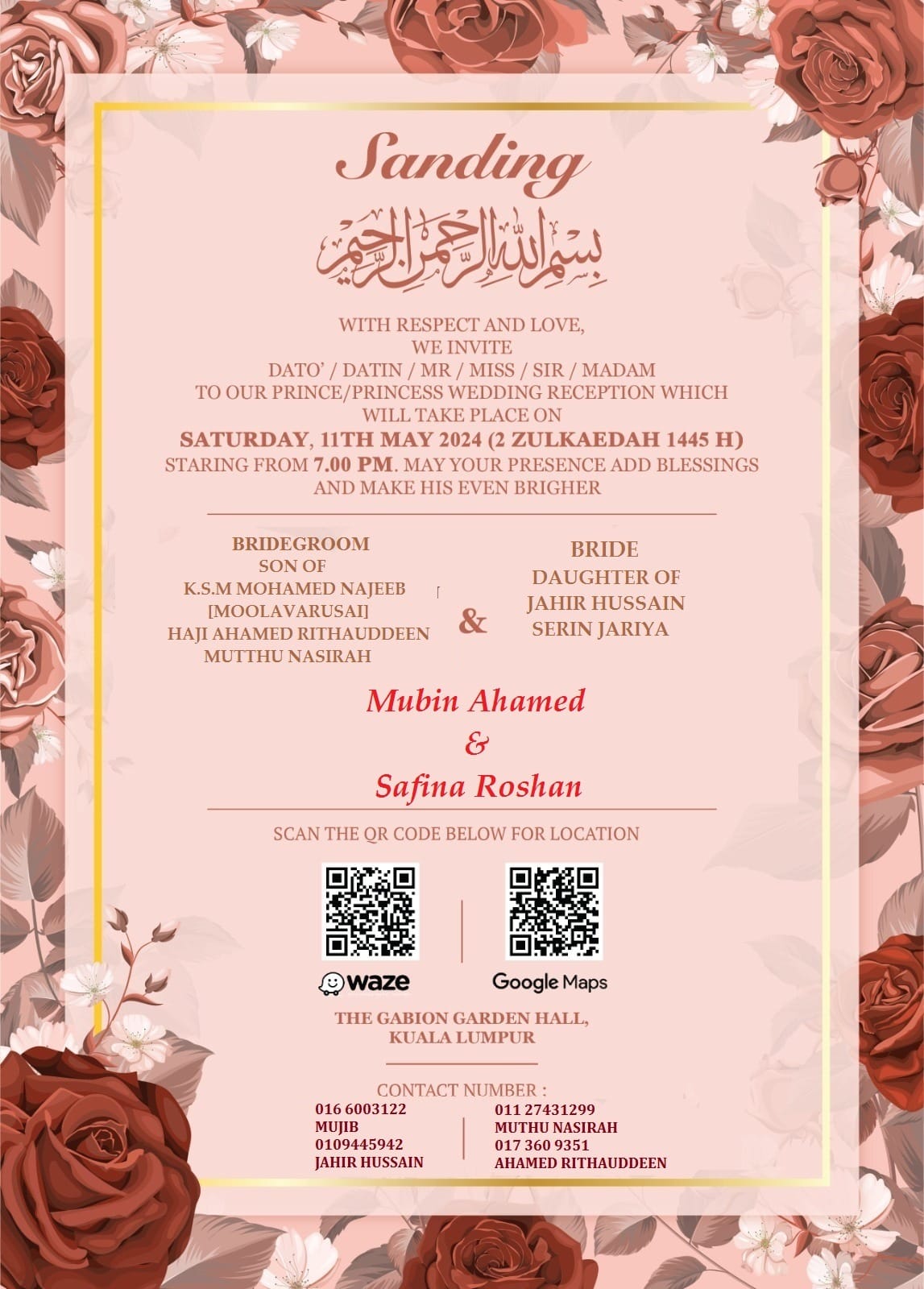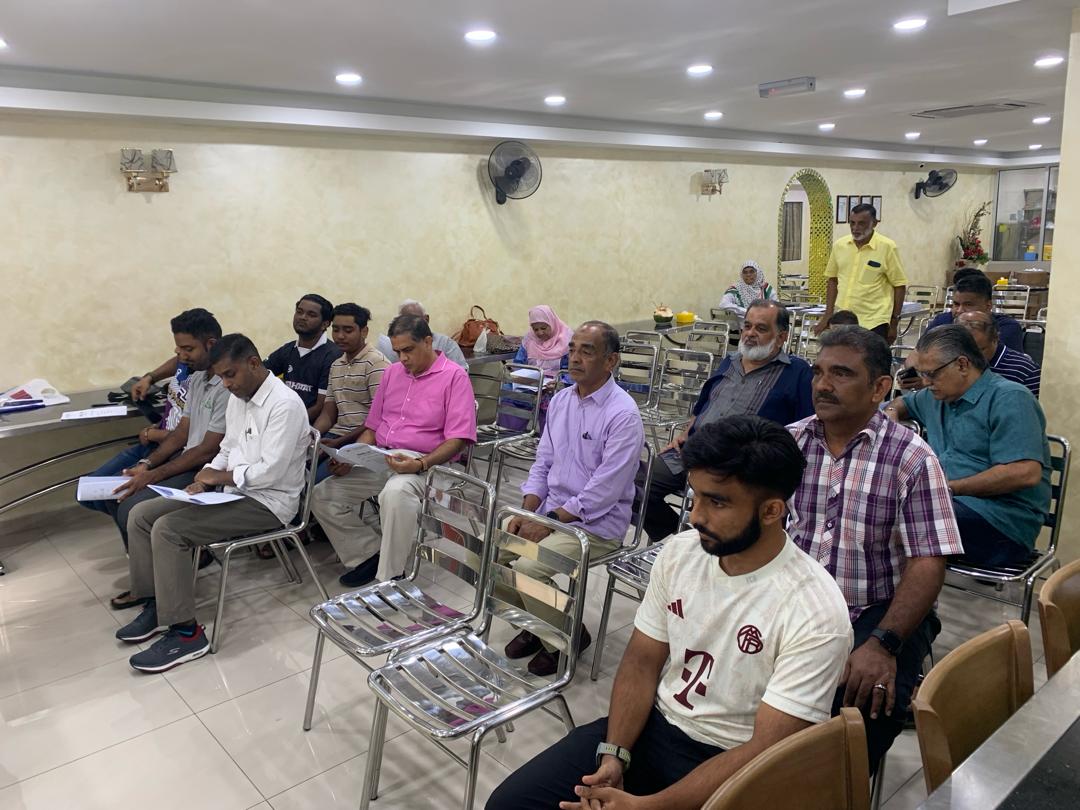Ahmedabad’s Bus System a Hit with Several Countries
- WEDDINGS & EVENTS
- Ahmedabad’s Bus System a Hit with Several Countries
Ahmedabad’s Bus System a Hit with Several Countries
MAMJ President started to do some research on Public Transportation system after reading Mr.Adams(Hong Kong) comment on Malaysian Public transport.This article looks very relevant and interesting.Enjoy reading and look where India has gone and where are we in Malaysia.Happy reading.
Ahmedabad’s bus system a hit with several countries
| Malaysia, Indonesia, Tanzania, among others, study the city’s bus rapid transport system. |

Despite a four-wheeler and a couple of two-wheelers parked at his residence, Manubhai Dhruva prefers to take the public transport. Ask him the reason and the 78-year-old retired English lecturer answers with a smile, “It takes me a good 10-15 minutes less to travel by bus than my own vehicle.”
The public transport in question is the Ahmedabad Bus Rapid Transit System (BRTS).

IP Gautam, municipal commissioner, Ahmedabad Municipal Corporation (AMC) and chairman, Ahmedabad Janmarg Limited (AJL), a special purpose vehicle set up for BRTS, said, “To tap the success of the project after almost 10 months, we recently interviewed a group of doctors at Civil Hospital who used to commute by cars. The results were quite encouraging. Ever since they began commuting on BRTS and the feeder buses, they have been able to save 70 per cent time and 50 per cent conveyance cost.”
“We gradually intend to move from the lesser congested areas in Ahmedabad where we have been highly successful to highly congested areas in some of the eastern parts of the city. Moreover, the aim behind the project is to reduce the use of private vehicles, reduce congestion and increase use of public transport.”

Such has been the success of the Ahmedabad BRTS that the project has caught the fancy of not just the local commuters but of several nations. Representatives of countries, including Tanzania, Lagos, Vietnam, Malaysia, Indonesia, and Dar es Salaam, have visited the city to study and adopt the system.
Today, Ahmedabad BRTS, officially known as ‘Janmarg’, offers commuters an average speed of 27 km per hour — one of the highest among public road transport in the country. Its dedicated corridor and bus stations running through the middle of the road offers commuters easy access to both sides of the road.
“Not just did we win some global awards like the Best Sustainable Transport Award and Best Mass Rapid Transit System but also caught the attention of other countries who now want to study and adopt the success of Janmarg. The project’s success has put Ahmedabad and Gujarat on the global map,” said Shivanand Swamy, associate professor, CEPT University and team leader of the BRTS project.

The Ahmedabad BRTS has also been successful in tapping private vehicles owners and users. When its services were launched in October 2009, Janmarg saw about 22 per cent, 21 per cent and zero per cent of two-wheeler, three-wheeler and four-wheeler users respectively move from these private vehicles to the new public transport. After almost 10 months, this shift has risen to 24.5 per cent, 23.5 per cent and two per cent, respectively. Also, of the total 18,000-odd passengers per day on Janmarg, 57 per cent were previously using AMTS which has come down to 50 per cent for a whopping 65,000 passengers per day.
“We have already provided parking facilities at major BRTS bus stations and traffic junctions to encourage people to park their two wheelers and four wheelers and opt for BRTS for faster commuting,” adds Gautam. What’s more, AJL is planning to build at least four major parking zones at areas including Bopal and Narol to encourage two-wheeler and four-wheeler users to shun their vehicles for BRTS.

While Janmarg’s phase one was completed on June 2009, the project was commercially launched only in October 14, 2009. Backed by a detailed project report (DPR) prepared by CEPT University, the Ahmedabad Municipal Corporation (AMC), led by municipal commissioner IP Gautam, took the initiative to follow the Jawaharlal Nehru National Urban Renewal Mission (JnNURM) guidelines on urban mobility and announced the BRTS project in 2005-06. With the project being approved in November 2006 at an investment of Rs 981.45 crore, the work on BRTS commenced in 2007 for the first phase of 12.5 km from RTO to Pirana, wherein around Rs 492.39 crore has been spent, through a special purpose vehicle (SPV) called Ahmedabad Janmarg Limited (AJL).
To boost its popularity, authorities offered free rides to commuters for the first three months. Moreover, special rides for prominent businessmen, doctors, students, politician, religious leaders, and senior citizens were organised.

But with other cities like New Delhi and Pune building dedicated corridor for such BRT, what makes the Ahmedabad BRTS stand apart? “The launch of such systems in other countries as well as other cities in India allowed us not to repeat some of their mistakes. The project also saw a leadership in the state and local government that was more professional and eager to implement sans the bureaucracy hurdles. Add to that, people involved in the project saw it as their own initiative rather than the government’s. Not just other countries but also other BRT projects like Pune and Indore intend to now adopt the Ahmedabad Janmarg model since the 900 mm high floor diesel buses from Tata and bus stations in the middle of the corridor offer a walk-in-walk-out experience,” opines Swamy.

Meanwhile, according to Akhil Brahmbhatt, DGM Operations, AJL, at an average ticket of Rs 5 (from a minimum of Rs 2 to maximum of Rs 11), the project currently earns a daily revenue of Rs 3.5 lakh on a 30 km-odd stretch comprising 43 bus stations. While about 41 buses, operational contract for which has been awarded to Chartered Speed Pvt Ltd (CSPL), are plying on the corridor, AJL has ordered for another 680 buses from Tata Motors as well as Ashok Leyland. Of these, about 20 air-conditioned buses costing Rs 30 lakh and 35 non air-conditioned buses costing Rs 24 lakh will be handed over to CSPL for BRTS, rest costing Rs 23 lakh will be handed over to AMTS to be operated as feeder buses for connecting other routes to BRTS corridor.

In next couple of months, AJL intends to add another 12-13 km to take BRTS from RTO to Naroda, thereby completing the second phase of the project. By then, Janmarg is expected to generate a daily revenue of Rs 6-6.5 lakh from about 120,000-130,000 passengers per day. By March 2012, AJL hopes to take the total length of BRTS corridor to 88 km, covering areas like SG Highway, Sola, Gomptipur, Odhav, and Danapith, apart from an elevated route to Kalupur Railway Station.
Source: Business Standard
Categories
Events
Blog Archieve
- [+] 2024 (2)
- [+] 2023 (2)
- [+] 2021 (2)
- [+] 2020 (8)
- [+] 2019 (5)
- [+] 2018 (5)
- [+] 2017 (4)
- [+] 2016 (16)
- [+] 2015 (42)
- [+] 2014 (36)
- [+] 2013 (15)
- [+] 2012 (19)
-
[+]
2011 (61)
- [+] January (7)
- [+] February (7)
- [+] March (4)
- [+] April (1)
- [+] May (5)
- [+] June (1)
- [+]
July
(8)
- Kem Ibadah Wanita Pra-Ramadhan
- Invitation to Majlis Berbuka Puasa MAMJ
- Majlis Berbuka Puasa MAMJ 2011
- Ramadhan 2011 Fund
- Another Achievement by Our Past President Haji Mohamed Ismail Sharif – He is Among the Top 50 Islamic Finance Lawyers Globally. Alhamdulillah
- பட்டமளிப்பு விழா
- Majlis Buka Puasa Amal 2011 – Anjuran Indiamuslim.org (IM.ORG) Dengan Usahasama Muslim Manaver Sanggam (MMS)
- Chess tournament
- [+]
August
(9)
- ALL RELIGIONS SAY ‘ONE’ – Part 2 (In Hinduism, Sikhism, Christianity, Judaism, Confucianism & Buddhism)
- ALL RELIGIONS SAY ‘ONE’ – Introduction
- PENYERTAAN PAS DALAM PERARAKAN BERSIH 2.0
- BAN ON RECITAL OF THE QURAN OVER LOUDSPEAKERS IN PENANG
- MY VIEW ON MARISA DEMORI’S LETTER IN NEW STRAITS TIMES
- THE ISSUE OF MURTAD (APOSTASY)
- ALAGAI PATTAMALIPPU VIZHA
- THANK YOU MAMJ MEMBERS
- RAMADHAN MUBARAKH!!!!!
- [+] September (5)
- [+] Octobar (4)
- [+] November (3)
- [+] December (7)
-
[+]
2010 (160)
- [+] January (8)
- [+] February (3)
- [+] March (1)
- [+] April (3)
- [+] June (1)
- [+]
July
(15)
- ஜோதிடம் , சகுனம் பார்த்தல் : இஸ்லாமியக் கண்ணோட்டம்
- OUR PRESIDENT AND DATIN VISIT DR.APJ ABDUL KALAM
- உம்மத்தின் வழிமுறை
- IBUBAPA
- The Key to Raising Righteous and Successful Children
- ங்கள், செலவழிக்கும் முன் சம்பாதியுங்கள்
- A New Domain Extension “.CO” Launched
- தாம்பத்திய உறவு
- கமலாதாஸ் – ஸுரையா :
- உறவுக்கு அப்பால் தாய் தந்தை
- PERIYAR DASAN’S SPEECH AT JEDDAH:PHOTOS
- பெண்ணுரிமையும்! இன்றைய பெண்களும்!!
- FAMILY VALUES : THE MOTHER
- Invitation to Program Rapat 1Malaysia
- Just See What British Thought of India and How They Managed to Rule Us
- [+]
August
(19)
- ALLAH THE GREATEST
- RAMADHAN : MONTH OF PATIENCE
- My Mother, My Best Friend
- RAMADHAN : MONTH OF PATIENCE
- Enriching the Community
- ZAKAT DISTRIBUTION
- 6-Story Jesus Statue Struck By Lightning!!!
- இல்லறமே நல்லறம்!!!
- வரதட்சணை : பூனைக்கு மணி கட்டுவது யார்?
- Dato’ Haji Thasleem and Datin Dr.Yazmeen with Dr. APJ Abdul Kalam
- அமைதியை இழந்து தவிக்கும் அமெரிக்க வீரர்கள்!
- WE ARE THE HONORABLE WOMEN OF ISLAM!
- Recent Archaeological find by Aramco During Gas Exploration in Saudi Arabia- Subhanallah
- ஒரு சகோதரியின் உலக சாதனை !
- BELOVED AMMA & ATTHA
- எதை கொடுப்பது ? எதை எடுப்பது?
- திருமணம் என்பது ஒவ்வொரு மனிதனில் வாழ்விலும் ஒரு முக்கியமான அம்சம்.
- முஸ்லிம்களுக்கு ஏன் இவ்வளவு பெருமை என்று வியந்தேன்…
- ஏன் இஸ்லாம் — ஆமினா அசில்மி
- [+]
September
(21)
- A Police Officer Wrote This! Please Read coz may Save your Life!
- Al-Quran
- APPEAL FOR LAND BY MAMJ
- History Mystery – Interesting and Incredible
- Makkah (SubahanAllah) -Current Development
- Prophet Muhammad SAW Praised by Non-Muslim Leaders and Philosophers
- Interactive Sites on Medical Information
- Indraiya Poluthu Iniya Poluthaaga Amaiyattum
- BABRI MASJID CASE -JUDGEMENT ON 24TH.SEPTEMBER 2010
- நபி மொழிகள் !!!
- The Minor Signs of the Last Day
- அல்லாஹ்விடம் உதவி தேடுங்கள்!
- Walking Helps Keep Body and Brain Young
- NY imam says mosque fight worth the controversy
- BELOVED ATTHA : YOU ARE THE BEST
- ஒரு குத்துச்சண்டை வீரரின் அழுகை!
- Ahmedabad’s Bus System a Hit with Several Countries
- Breaking News-RAMADHAN FUND 1431H
- All for a Palm Tree in Jannah
- MAMJ President at The Orphanage in Kg.Manjoi Ipoh
- MAMJ President at Buka Puasa Organised by Tanjung Muslim Association Penang in Association with Penang Hindu Sangam and Klinik Derma Sivasanta
- [+]
Octobar
(34)
- The Human Camera
- Outstanding Animations
- Best Signpost in India
- காய்கறிகள் பழங்கள் மூலமாக இருதய அடைப்பை நீக்க முடியுமா ?
- Better to be Lion Hearted!
- Peace of Mind Tips and Advice
- சில பொன்மொழிகள்..
- India’s Rare Pictures
- Home of a Mexican Drug Lord being raided!
- What is I C E ?
- Life iN the Year 3000
- GEMS OF WISDOM
- Regular Health Mistakes
- மகிழ்ச்சியாக இருப்பதற்குக் காரணங்கள் தேவை இல்லை
- Existence of Allah
- TO ALL AMMA’S : IMPORTANCE OF BREASTFEEDING
- ஆரோக்கியமாக வாழ ..
- Brain Damaging Food and Habits
- The status of the family in Islam
- Allah looks to your Heart & Deeds
- Shine a Light and enjoy your Coffee
- Be Very Careful of Rat Urine/Droppings
- THE PAST IS GONE FOREVER!!!!
- Taxi in Dubai
- Coincidental! – Good for Your Health
- ALLAHU AKHBAR!!
- The First Medical Council in The World
- Inside Ka’bah & Airmata Rasulullah SAW
- A Muslim Student in India Fights for Her Right to Dress in Islamic Way
- The Best Person in The History of Mankind
- FABULOUS COMPILATION
- ETIQUETTE OF NAMING CHILDREN
- Islam Again in Ayodya
- Interview with British Journalist Yvonne Ridley
- [+]
November
(38)
- Suhas Gopinath from Bangaluru,WORLD’S YOUNGEST CEO
- IF YOU HAVE A WILL, YOU WILL!!!!
- DISIPLIN ANAK-ANAK!!
- BE READY!!!!!!!!!!!!!
- REMEMBER! REMEMBER! REMEMBER!
- 360 DEGREE PICTURE – THE COCKPIT OF THE AIRBUS A380
- Allah takes Your Soul When You sleep
- 16 Amazing Photos that captured the world
- Be Amazed By The Beauty Of Nature
- MAMJ Presidents Speech at Masjid Muslim India Ipoh
- A Story of Appreciation
- Mirror or 2-Way Glass? BE CAREFUL
- God’s Work
- English is a Funny Language
- Hari Raya Aidiladha Wishes
- Superb Sentences By Famous People
- Dont Be Serious, Be Sincere
- Eating Fruits The Proper Way
- MUSLIM MOROCCANS LIVEHOOD
- Tony Blair’s sister-in-law Lauren Booth converts to Islam
- Success dosen’t come within a day! – MAMJ n Alagai Makkal
- பெண்
- THE SMALLEST GIRL IN THE WORLD!!!!!
- கோபம் – வேண்டவே வேண்டாம் !!!
- FED UP OF LIFE?
- SOCIAL CLASSES IN ISLAM???
- The Charles Schulz Philosophy
- ஆசைகளை சீர்படுத்துங்கள்
- ஆசைகளை முறைப்படுத்துங்கள்
- CWG 2010 Special – PHOTOGRAPHY
- Sejda Miracle
- Wedding Dates -Avoid Clash of Dates
- New Drug in Schools? Parents Please Take Note
- DEATH SENTENCE FOR A KIDNAPPER IN YEMEN
- AMAZING TRAIN ROUTES
- RICH INDIA? POOR INDIA? DO YOU BELEIVE THIS?
- One Call (ESTAWOO = Arrange yourselves) and The Impossible Happens
- To All Parents!
- [+]
December
(17)
- 14 YEARS OLD MOHAMED SUHAIL’S ACHIEVEMENTS:
- CONGRATULATIONS TO ALL MAMJ STUDENTS WHO SUCCEEDED IN PMR
- Notification of Wedding Dates
- Benefits of Drumstick leaves ( Tamil – Murungai leaves )
- Small teaser for Alagai Makkal..Enjoy!
- Niagara Falls 99 years ago. Worth Looking At
- 4 THINGS YOU PROBABLY NEVER KNEW YOUR MOBILE PHONE COULD DO
- ALAGANKULAM BIRDS SANCTUARY
- The Goodthings of HONEY
- The Ugly Briton
- The Cucumber
- Naive, Dim-wit or Extreme?
- Worth reading!
- Unconditional Love
- Muharram Message
- Muharram Greetings
- Amazing Houses Around the World – General Knowledge for Alagai Makkal
-
[+]
2009 (20)
- [+] September (2)
- [+] Octobar (3)
- [+] November (4)
- [+]
December
(11)
- Islam and Science
- Speak more in Malay -Dr. M Tells Indian Muslim
- Annual tax filing for YA 2009 – are we ready
- Divorce?! Separated!? Why?
- Wearing hijab – Compulsion, option or willingness?
- MAMJ EXCO MEET THE MEMBERS AT SUNGAI PETANI
- DINNER AND GIFT PRESENTATION TO EXCO MEMBERS 2006 – 2009
- Newspaper Clippings from India
- Eid al-Adha and Hajj 2009
- Thoughts to Share
- 2009 MAMJ Imam Al-Ghazzali Merit Awardees
- [+] 1996 (1)
- [+] 1993 (1)
- [+] 1881 (1)
-
[+]
0 (1)
Advertisement
Newsletter Sign Up
For Latest Updates




